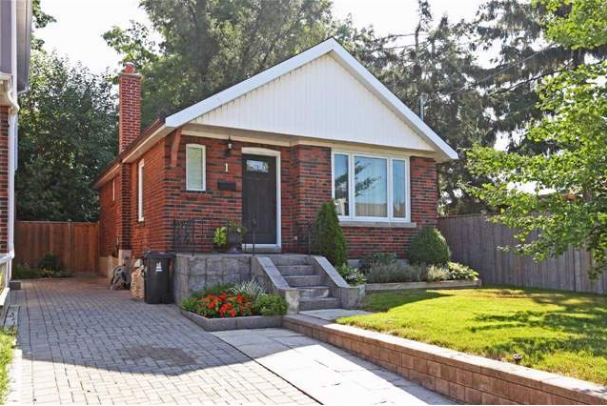More Torontonians are eyeing detached homes, even though those properties are the most difficult to buy.
A brand-new investigate by the Ontario Real Estate Association surveyed 1,003 Ontarians looking to purchase a dwelling. Fifty per cent of them said they plan to buy a detached home in the next two years.
In Toronto, that’s up 21 percentage points from a year ago. Across Ontario, it’s up 13 percentage points.
But the supply of detached dwellings in Toronto is at an all-time low.
“The real Canadian dream is to have sole home ownership with land so you can grow their own families,” said Mr. Langlois, a real estate agent.” So you find out your client’s needs and what he wants, but then when you go looking for the house, nothing exists.”
Just 537 detached homes for sale in Toronto area
In a city of three million people, merely 537 detached dwellings were listed for sale on the Toronto Real Estate Board on Wednesday.
Langlois says he’s not astonished and that his patrons are often frustrated by the lack of supply.
When they do find something that dress their needs, Langlois says, the rivalry is fierce and that drives costs up.
“I’ll get patrons that will finally find their dream home, they have a budget in mind, they can only go up so much and when we go in to make an offer, they often get into a bidding campaign.”
According to the Canada Mortgage and Housing Corporation, the needs of the detached dwellings isn’t going to decrease soon.
A autumn report on the housing outlook for the Greater Toronto Area observed that demand for single detached dwellings will be particularly strong in 2017, yet fewer of them will be built because of” due to zoning restraints and land-use policies favouring high-density building.”
The Ontario government created growth plans for the Greater Horseshoe region in the early 2000’s. These programs restrict where a developer is allowed to build and what kinds of building can be built.
“There’s a number of reasons for this,” said Phil Stewart, an urban planner with Pound and Stewart Planning. “There’s the preservation of agricultural land. There’s only so much of it in Ontario, because you don’t have to go too far north before you hit the Canadian Shield — basically a rocky shield.”
Stewart says the other reason enable the government wants to protect geological features such as the Niagara Escarpment.
“The easiest course in respect of all of this is to expand vertically. That’s why you have a lot of condo buildings today,” said Stewart.
Tim Hudak, CEO of the Ontario Real Estate Association, says that there is still room to construct more houses in Toronto.
“There are old industrial areas,” said Hudak. “It makes a lot of sense to increase concentration along the subway lines.”
Hudak says the province is examining the growth plan for Ontario and has been receptive to OREA’s suggestions.
“We’ve had personal meetings with them,” said Hudak. “To their credit they’ve doubled the land transfer tax for the first-time buyers in Metro Toronto.”
He says now it’s Toronto’s turn to rethink its land transfer tax because that prevents many people from moving.
“Toronto is unique in Canada in having a land transfer tax,” said Hudak.
“On the street we’ve lived on in Toronto, we’ve probably seen seven or eight families who needed more space because they had kids. But they discovered the double land transfer tax intimidating, so instead of moving they chose to renovate their property. That signifies there’s another young couple who won’t be able to buy that home.”
With costs of a detached home in Toronto sitting at only over $1 million, people pay from $40,000 to $50,000 in provincial and municipal land transfer taxes combined.
Source: CBC News, Toronto


Leave a Reply